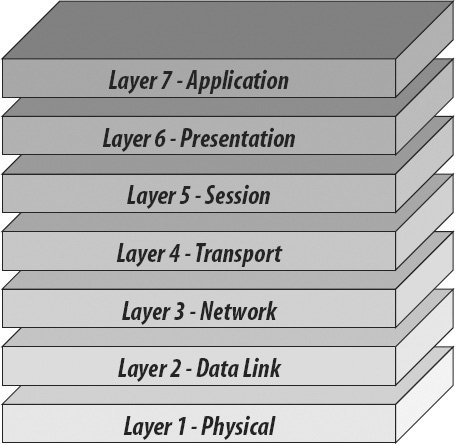OSI Model
Appendix. OSI ModelThe Organisation Internationale de Normalisation (International Standards Organization, or ISO), which has been developing international standards since 1946, introduced the Open Systems Interconnection (OSI) model in an effort to define a conceptual model for accomplishing communication and interoperability between systems, regardless of the specific hardware or networking characteristics of the systems. Adopted in 1984, the OSI Basic Reference Model defines a network architecture consisting of seven layers in the communications process, as shown in Figure A-1. In very rough terms, the top layer of the OSI model (layer 7) deals with the end user interface. The next three layers (layers 6, 5, and 4) define the characteristics of the systems at the two ends of the communication. The bottom three layers (layers 3, 2, and 1) define the network facilities necessary to transfer a message. Figure A-1. Open Systems Interconnection (OSI) model At the highest layer (the application layer), an application program in one computer communicates with an application in another computer. For example, you might send an electronic mail message to a user or to another computer. The mail program on the sending and receiving computers each resides in its own application layer. Within the transmitting computer, the information to be transferred is passed down from one layer to the next layer, with each layer performing the work needed to prepare the data for physical transmission. Each side of the transmission performs an equivalent function. For example, a layer on one side adds routing information; the other side removes it. Each step in the process is a type of transformation because eventually the information is transferred from one computer to the next in a very different formfor example, as radio waves, telephone line signals, or pulses of light in an optical fiber. At the other end of the communications link, the transformations have to be reversed so the other side of the communication can understand the information. Table A-1 shows the functions particularly those that are security-relatedperformed by each layer of the OSI model.
If you are involved at all with networking, you have likely already memorized this table. Certainly, you cannot expect to converse with a network engineer without hearing reference to "Layer 3 addressing," or "Application Layer issues." Those new to the model can keep the layers straight using some simple mnemonics, in which the first letter of each word corresponds in order to the layers of the OSI model:
|
EAN: 2147483647
Pages: 121